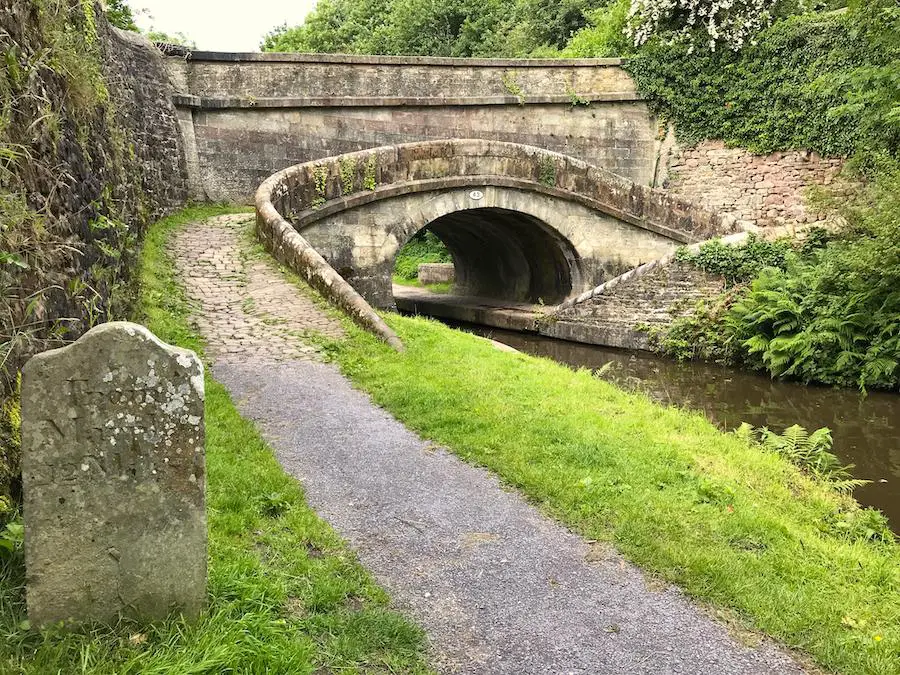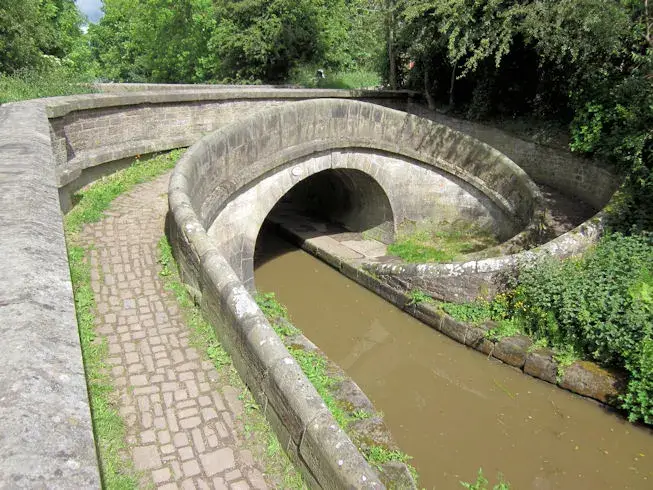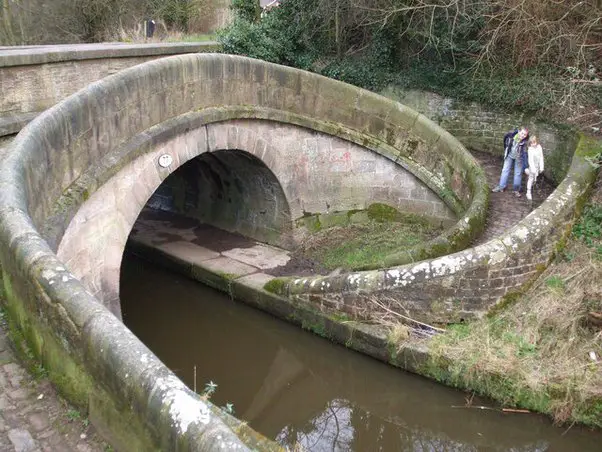Nestled in the picturesque Cheshire countryside of England, the Stone-built Snake Bridge over the Macclesfield Canal stands as a testament to architectural prowess and historical endurance. This hidden treasure, with its unique structure, rich history, and breathtaking scenery, is a must-see for anyone touring the region.
Constructed in the late 18th century, the Stone-built Snake Bridge was part of the Macclesfield Canal’s infrastructure, built to facilitate the transport of goods and raw materials between Marple and Macclesfield. The renowned engineer behind this extraordinary structure was Thomas Telford, celebrated for his inventive and revolutionary contributions to civil engineering.

The bridge, aptly named “Snake Bridge,” boasts a design that consists of a series of interweaving arches, reminiscent of a coiling snake. This intricate design was crucial to address the canal’s steep ascent as it traversed a valley, thus eliminating the need for locks and enabling smooth passage for boats. Constructed using local stone, the bridge serves as a tribute to the craftsmanship of the stonemasons who diligently worked on it.

The Stone-built Snake Bridge had a significant impact on the industrial economy of the region. It facilitated efficient and economical transportation of goods and raw materials, thereby boosting trade and commerce in the locality. Moreover, the bridge is a symbol of the innovative spirit and creativity of its builders, underlining the profound influence infrastructure can have in molding our world.

Today, the Stone-built Snake Bridge is a favorite spot for pedestrians and cyclists who can revel in the panoramic views of the surrounding countryside from the bridge’s summit. Numerous walking and cycling paths, such as the Macclesfield Canal Towpath and the Middlewood Way, pass by the bridge. These paths offer an exclusive viewpoint of the bridge, allowing visitors to admire its detailed design and construction up close.